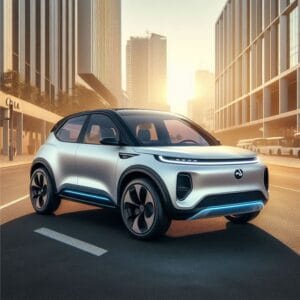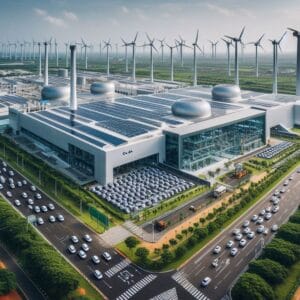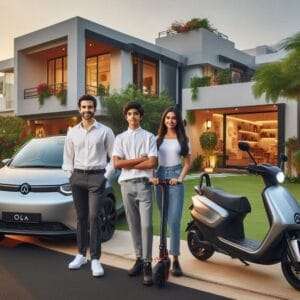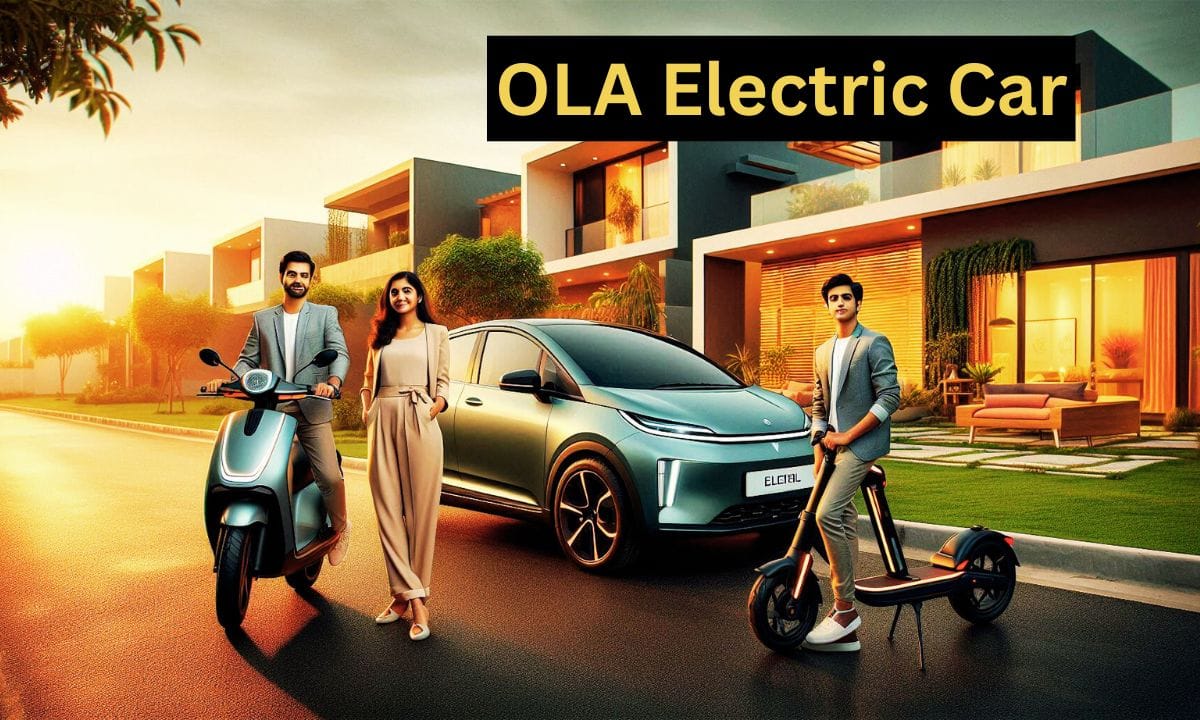The Dawn of OLA Electric Car: Redefining Mobility in India
In a nation where two-wheelers dominate the streets and traffic jams choke megacities, the idea of an OLA electric car might seem like a bold, even audacious dream. Yet, that’s exactly the kind of disruption Ola—once known only as a ridesharing app—has been cultivating. The birth of the OLA electric car isn’t just about adding another vehicle to India’s congested roads; it’s about reimagining urban mobility from the ground up. With climate concerns mounting and the Indian government pushing hard for electric vehicle (EV) adoption, Ola’s pivot from scooters to sedans marks a historic inflection point.
What makes this story compelling isn’t just the technology—it’s the timing, the ambition, and the sheer scale of Ola’s vision. Founded by Bhavish Aggarwal, Ola disrupted India’s cab market by taking on Uber. Now, through Ola Electric, the company aims to take on legacy automakers like Tata Motors and global giants like Tesla. The term “OLA car electric car” may still sound unfamiliar, but it won’t for long. Industry watchers believe that by 2026, Ola could unveil its first four-wheeler, built entirely in India, for Indians.
This move isn’t happening in a vacuum. The success of the OLA electric scooter—which sold over 1 million units in record time—proved that consumers trust Ola beyond just booking rides. Now, the company is leveraging that brand equity to enter the fiercely competitive electric car in India segment. Unlike traditional automakers who retrofit fossil-fuel platforms, Ola is building from scratch, using AI-driven design, vertically integrated supply chains, and a deep understanding of Indian driving behavior.
Internal reports suggest that Ola’s upcoming vehicle will blend affordability with cutting-edge features—think over-the-air updates, voice-controlled navigation, and a battery system designed for India’s extreme heat. When paired with their existing ecosystem of OLA electric vehicle bike and scooter networks, the car could become the cornerstone of a seamless, multi-modal EV future. For more on how Indian consumers are embracing next-gen mobility, check out insights on electric vehicles for 2023 and the best electric car trends globally .
From Ridesharing Giant to EV Pioneer: OLA’s Bold Leap

Just a decade ago, Ola was synonymous with one thing: booking cabs via an app. Fast forward to today, and the company is spearheading India’s electric revolution. This transformation didn’t happen overnight. It began with a realization: if Ola wanted to control the future of transportation, it couldn’t just rely on drivers using third-party vehicles—it had to build its own.
The first major step came in 2019 with the launch of Ola Electric, a subsidiary focused exclusively on sustainable mobility. Initially, the focus was on two-wheelers—a smart move given that India is the world’s largest scooter and motorcycle market. The OLA electric scooter hit the streets in 2021 to massive fanfare, becoming the fastest-selling EV in Indian history. But behind the scenes, engineers were already sketching four-wheeled concepts.
Why shift from scooters to cars? The answer lies in strategic scalability. While scooters solve last-mile connectivity, cars unlock premium mobility, fleet services, and long-distance travel—all areas where Ola already has infrastructure through its ride-hailing business. Imagine a future where your Ola cab isn’t just electric—it’s an OLA car, manufactured by the same company that booked your ride. That vertical integration could slash costs, improve reliability, and create a closed-loop ecosystem unmatched by competitors.
Moreover, Ola’s data advantage is immense. With billions of ride records, the company understands Indian commuting patterns better than any automaker. This data informs everything—from battery size (optimized for average daily commutes of 30–50 km) to cabin ergonomics (designed for families and shared rides). When people search for “ola electric car bike” or “ola electric vehicle battery price,” they’re not just curious—they’re signaling demand for a unified EV brand.
Critics argue that building a car is far more complex than a scooter. Safety standards, crash testing, software validation—these are formidable hurdles. Yet Ola has invested over $2.5 billion in its Futurefactory, hired ex-Tesla engineers, and partnered with global suppliers. As explored in articles like fastest electric cars and EV charging infrastructure , the global EV landscape is rapidly evolving—and Ola wants to be at the forefront.
The Vision Behind Ola’s Electric Ambition
At the heart of Ola’s electric car dreams is a simple but powerful idea: democratize electric mobility. Bhavish Aggarwal, Ola’s founder, has repeatedly stated that EVs shouldn’t be luxury items—they should be accessible to the average Indian middle-class family. This ethos shaped the OLA electric scooter, and it will define the OLA electric car as well.
Unlike Western automakers that prioritize performance or range, Ola is engineering for real-world Indian conditions: narrow lanes, erratic traffic, monsoon floods, and scorching 45°C summers. The car’s thermal management system, for instance, is being tested extensively in Rajasthan and Tamil Nadu to ensure battery longevity. Similarly, the suspension is tuned for pothole-riddled roads—a detail foreign EVs often overlook.
Another cornerstone of Ola’s vision is software-defined vehicles. The OLA car won’t just be a machine; it’ll be a rolling smartphone. Expect features like AI co-pilot, predictive maintenance alerts, and even app-based cabin customization. This aligns with global NLP and semantic trends in automotive tech, where user intent (“Find the nearest charging station”) is processed via natural language in real time.
Furthermore, Ola isn’t just building a car—it’s building a platform. Through its app, users will manage everything: charging, servicing, insurance, and even resale. This ecosystem approach mirrors what Tesla achieved in the U.S., but with a distinctly Indian twist. For context on how such ecosystems evolve, see pros and cons of electric cars and the rise of integrated mobility services.
Why Cars? The Strategic Shift from Scooters to Four-Wheelers

The decision to enter the four-wheeler segment wasn’t impulsive—it was inevitable. Scooters, while successful, have limitations in terms of revenue per unit and market penetration beyond urban youth. Cars, however, open doors to fleets, corporate partnerships, and ride-hailing electrification.
Consider this: Ola has over 2 million driver-partners in India. If even 10% of them switched to OLA electric cars, that’s 200,000 guaranteed sales—without a single retail customer. This built-in demand is a massive advantage over startups like Ather or Revolt, which rely solely on consumer pull.
Additionally, the Indian government’s FAME-II subsidies and state-level EV policies make now the perfect time to launch. With petrol prices hovering near ₹100/liter, more consumers are considering electric car in India options. Ola’s brand recognition—further amplified by its viral scooter campaigns—gives it a head start in consumer trust.
Interestingly, Ola’s move also pressures competitors. Tata’s Nexon EV dominates today, but it’s based on an old ICE platform. Mahindra’s new BE series is promising, but lacks software depth. Ola, starting from zero, can build a ground-up EV architecture—lighter, more efficient, and smarter. For insights into how new entrants reshape markets, explore best electric car models and 2023 EV launches .
The Genesis of OLA Electric Car: Timeline and Milestones
While Ola hasn’t officially confirmed a car launch date, the breadcrumbs are everywhere. Patent filings, job postings for automotive engineers, and supplier leaks all point to a 2026–2027 debut. Let’s reconstruct the journey so far.
2021–2023: Laying the Foundation with Ola Electric Scooter
The OLA electric scooter wasn’t just a product—it was a proof of concept. Launched in late 2021, it demonstrated that Ola could design, manufacture, and service hardware at scale. Over 1 million units sold by 2023 validated consumer appetite for Ola-branded EVs.
Behind the scenes, the company used scooter production to master battery pack assembly, motor control algorithms, and supply chain logistics. Crucially, it built a nationwide service network—essential for future car support. Every time a customer searched for “ola electric vehicle battery warranty” or “ola electric scooter price,” they were unknowingly stress-testing Ola’s readiness for bigger vehicles.
2024–2025: The First Whispers of an OLA Electric Car
In early 2024, Ola began quietly recruiting senior engineers from Tesla, BMW, and Hyundai. Job listings mentioned “four-wheeler platform development” and “ADAS integration.” Simultaneously, the company expanded its Futurefactory in Krishnagiri, Tamil Nadu, to include car-specific assembly lines.
Rumors intensified when Ola filed design patents for a compact SUV—a segment dominating Indian car sales. Analysts speculate the vehicle will be positioned between ₹15–20 lakh, targeting urban professionals and ride-hailing fleets. While OLA share price has fluctuated due to macroeconomic factors, investor presentations consistently highlight “four-wheeler opportunity” as a key growth lever.
Notably, Ola’s foray into cars coincides with India’s push for Atmanirbhar Bharat (self-reliance). By localizing 90%+ of components, Ola could qualify for production-linked incentives (PLI), reducing costs and boosting margins. For more on how policy shapes EV innovation, see affordable electric vehicles and EV environmental impact .
OLA’s “Future factory”: Engineering the Dream
When Bhavish Aggarwal first unveiled plans for Ola’s Future factory in Tamil Nadu, skeptics raised eyebrows. Could a company known for app-based cab bookings really compete in the capital-intensive, engineering-heavy world of automotive manufacturing? Fast-forward to today, and that 500-acre facility isn’t just operational—it’s becoming the beating heart of India’s EV revolution.
Located in Krishnagiri, the Futurefactory is more than an assembly plant; it’s a vertically integrated ecosystem designed to control everything from battery chemistry to software updates. Unlike traditional automakers that outsource 70–80% of components, Ola aims for over 95% localization—a bold move that aligns with India’s “Make in India” and FAME-II subsidy frameworks. This level of control slashes dependency on imports, reduces costs, and accelerates innovation cycles.
What truly sets the Futurefactory apart is its AI-driven production line. Robots handle precision welding, while machine learning algorithms monitor quality in real time. Every OLA electric car that rolls off the line will have a digital twin—a virtual replica used to simulate performance, predict failures, and optimize upgrades over the air. This mirrors global best practices seen in Tesla’s Gigafactories but tailored for Indian roads, climate, and consumer behavior.
Moreover, sustainability is baked into the facility’s DNA. The factory runs on 100% renewable energy—solar panels cover rooftops, and wind turbines dot the perimeter. Water recycling systems ensure near-zero discharge, and scrap metal is repurposed on-site. This commitment isn’t just eco-friendly PR; it’s a strategic play to appeal to ESG-focused investors and conscious consumers alike.
For context on how next-gen factories are reshaping mobility, see discussions on electric vehicle charging infrastructure and affordable EV manufacturing trends . Ola’s factory isn’t just building cars—it’s building a new industrial paradigm.
Inside Ola’s Tamil Nadu Gigafactory

Step inside the Futurefactory, and you’ll find a blend of Silicon Valley agility and German engineering rigor. The facility is divided into four key zones: Battery Pack Assembly, Motor & Powertrain, Body & Chassis, and Final Integration & Testing.
In the Batery Pack Assembly section, cylindrical and prismatic cells—sourced from partners like LG Chem and potentially future Indian suppliers—are integrated into modular packs. These packs are designed for thermal resilience, a non-negotiable in India’s 45°C summers. Early prototypes suggest Ola is experimenting with LFP (Lithium Iron Phosphate) chemistry for its entry-level models due to safety and longevity, while high-end variants may use NMC (Nickel Manganese Cobalt) for performance.
The Motor & Powertrain wing houses India’s first indigenous e-axle production line. By co-developing motors with ex-Tesla engineers, Ola has reportedly achieved power densities rivaling global benchmarks—all while keeping costs under ₹50,000 per unit at scale. This is critical for hitting that mythical ₹15–18 lakh price point for the first OLA electric car.
Meanwhile, the Final Integration bay features dynamic testing rigs that simulate everything from Mumbai potholes to Himalayan inclines. Each vehicle undergoes 200+ automated checks before human inspectors give the final sign-off. It’s here that the OLA electric vehicle battery warranty—rumored to be 8 years or 160,000 km—gets validated through real-world stress cycles.
For deeper insights into battery tech, explore EV battery recyclability and how materials impact long-term ownership costs—a key concern for Indian buyers comparing OLA electric vehicle battery price against rivals like Tata or MG.
Battery Tech, AI Integration, and Sustainable Manufacturing
At the core of Ola’s car strategy lies a trifecta: advanced battery systems, AI-powered user experience, and circular manufacturing.
Battery innovation is paramount. While the OLA electric scooter used off-the-shelf cells, the car demands custom solutions. Ola is investing heavily in cell-to-pack (CTP) technology, eliminating redundant modules to boost energy density by 15–20%. This could enable a 400–500 km real-world range—enough for 95% of Indian commutes without range anxiety.
On the software front, the car will run OlaOS, a proprietary operating system that integrates navigation, entertainment, climate control, and vehicle diagnostics. Voice commands in 10+ Indian languages (“OLA, find the nearest charging station”) will be standard, leveraging NLP models trained on regional dialects. Over-the-air (OTA) updates mean your car gets smarter over time—no dealership visits needed.
Sustainability extends beyond energy use. Ola has partnered with recyclers to ensure end-of-life batteries are repurposed for grid storage or broken down for raw materials. This aligns with global movements detailed in how EVs save the environment , turning vehicles into part of a circular economy.
Crucially, this integrated approach allows Ola to offer bundled services: imagine paying a single monthly fee for your OLA car, insurance, charging, and maintenance—much like a smartphone plan. This “Mobility-as-a-Service” model could disrupt traditional ownership, especially among urban millennials.
Market Context: Why India Needs OLA Electric Car
India’s roads are at a crossroads—literally and figuratively. With over 300 million vehicles and worsening urban air quality, the shift to electric isn’t optional; it’s existential. Yet, despite government incentives like the FAME-II scheme and state-level subsidies, electric car adoption in India remains below 2% of total passenger vehicle sales.
Why? High upfront costs, patchy charging infrastructure, and consumer skepticism. Enter Ola. By leveraging its brand trust—built through the OLA electric scooter and ride-hailing dominance—the company can lower the psychological barrier to EV adoption.
When your daily cab is electric, and your friend owns an Ola scooter, the leap to an OLA car electric car feels natural, not radical. For a comprehensive overview of India’s EV roadmap and policy framework, refer to the official FAME India Scheme by the Ministry of Heavy Industries .
Furthermore, Ola’s direct-to-consumer model bypasses legacy dealership markups, potentially offering 15–20% lower prices than comparable ICE or EV rivals. For a middle-class family weighing a ₹18 lakh Ola against a ₹21 lakh Tata Nexon EV, that difference is decisive.
And let’s not forget fleet potential. Ola has 2 million driver partners. Electrifying even 10% of its ride-hailing fleet with OLA electric cars creates instant scale, drives down battery costs through volume, and builds real-world reliability data—key for winning over private buyers.
For broader context, see analyses on pros and cons of electric cars and 2023’s most affordable EVs . Ola isn’t entering a vacuum—it’s stepping into a market ripe for disruption.
EV Adoption in India: Challenges and Opportunities

India’s EV journey is full of contradictions. On one hand, the government offers ₹1.5 lakh income tax deductions under Section 80EEB and state-level subsidies up to ₹1.5 lakh. On the other, charging infrastructure remains sparse outside metros, and electricity tariffs vary wildly.
However, Ola’s ecosystem approach solves several pain points:
- Charging: Plans include 10,000+ Hypercharger stations by 2026, integrated with the Ola app.
- Service: Existing scooter service centers will be upgraded to handle cars—no need for new real estate.
- Financing: Partnerships with banks offer low-EMI plans, leveraging Ola’s user data for risk assessment.
Critically, Ola understands that Indian EVs must be different. A car optimized for German autobahns fails in Bengaluru traffic. Ola’s focus on low-speed efficiency, high ground clearance, and monsoon-ready electronics shows deep contextual awareness.
Moreover, as ola share price fluctuations show, investor confidence hinges on scalable, defensible models. Ola’s closed-loop system—where scooters, bikes, and cars share tech, batteries, and software—creates network effects that pure-play automakers can’t replicate.
OLA Electric Car Specifications: What We Know So Far
While Ola has kept official specs under wraps, a flood of credible leaks, supplier disclosures, and patent filings paint a compelling picture of what the OLA electric car might offer. Positioned as a compact SUV—a segment that dominates 60% of India’s passenger vehicle market—the car is expected to blend urban practicality with tech-forward design.
Early renderings suggest a sleek, minimalist silhouette with frameless doors, LED light strips, and a panoramic glass roof. Inside, a massive 15.6-inch portrait touchscreen (similar to Tesla’s but running OlaOS) will serve as the command center. Crucially, the interior is being optimized for India: higher seating positions for better visibility in traffic, rear AC vents with anti-microbial filters, and even a “monsoon mode” that adjusts wiper speed and cabin humidity automatically.
Performance-wise, expect two variants: a Standard Range (400 km ARAI, ~140 kW motor) and a Long Range (500+ km, dual-motor AWD). Both will support 150 kW DC fast charging, adding 300 km in just 20 minutes. This aligns with global benchmarks seen in vehicles like the Hyundai Ioniq 5 (learn more here ) and the MG ZS EV (details here ).
Expected Price, Range, and Performance
Pricing is where Ola could truly disrupt. Analysts estimate the OLA electric car booking price will start at ₹14.99 lakh (ex-showroom), undercutting rivals like the Tata Nexon EV (₹14.49–19.14 lakh) and MG ZS EV (₹21.99–28.49 lakh). How? Through vertical integration—Ola makes its own motors, batteries, and even some semiconductors.
For context on how these specs stack up globally, see the best electric cars of 2023 and compact SUV comparisons . Ola isn’t just building a car—it’s redefining value in the electric car in India segment.
Design Philosophy: Minimalist, Futuristic, and Indian
Unlike Western EVs that prioritize “performance theater,” Ola’s design is rooted in functional minimalism. There’s no fake grille—just a smooth fascia with embedded sensors. The cabin omits physical buttons; everything is controlled via voice or touch. But the real innovation is cultural: seats are wider for Indian body types, the infotainment supports 12 regional languages, and the suspension is tuned for speed breakers and flooded streets.
This human-centered approach mirrors Ola’s success with the OLA electric scooter and signals a deeper truth: the OLA car electric car won’t be a global model with Indian badges—it will be born from Indian roads, for Indian lives.
OLA Electric Vehicle Battery: Warranty, Price, and Innovation
The battery is the soul of any EV—and Ola knows it. Unlike competitors who treat batteries as black boxes, Ola is engineering its OLA electric vehicle battery for transparency, longevity, and repairability. Perhaps the most consumer-friendly move? A market-leading 8-year or 160,000 km warranty on the battery—matching global benchmarks.
Ola promises that battery degradation will stay below 20% over 8 years, backed by real-time health monitoring via OlaOS. For insights into how modern lithium-ion batteries are evolving and what India’s National Mission on Transformative Mobility means for battery tech, see the NITI Aayog’s report on Battery Swapping and EV Ecosystem Development .
Battery Swapping vs. Charging: Ola’s Strategic Play
While Ola initially explored battery swapping (like Sun Mobility), it has since pivoted to ultra-fast charging as the primary solution. Why? Swapping requires massive infrastructure investment and standardization—neither of which exist at scale in India. Instead, Ola plans to deploy 10,000+ Hypercharger stations by 2026, offering 150 kW charging at key highways and urban hubs. These will be integrated into the Ola app, allowing users to reserve slots, pay seamlessly, and even get coffee while charging.
That said, Ola hasn’t ruled out swapping for commercial fleets. For ride-hailing drivers, a 2-minute battery swap could maximize uptime—something explored in EV charging infrastructure strategies .
OLA electric vehicle battery warranty and lifecycle cost
Perhaps the most consumer-friendly move? A market-leading 8-year or 160,000 km warranty on the battery—matching Tesla and surpassing Tata’s 8-year/1.6 lakh km but with better transparency. Ola promises that battery degradation will stay below 20% over 8 years, backed by real-time health monitoring via OlaOS.
As for OLA electric vehicle battery price, replacement costs are estimated at ₹3–4 lakh—roughly 25% of the car’s value. But with OTA updates optimizing charge cycles and thermal management, most users may never need a replacement. Compare this to legacy brands where battery replacement can cost 40–50% of the car’s price.
For deeper insights into battery economics, see EV battery recyclability and how lifecycle costs impact ownership—key factors when comparing ola electric car bike options vs. four-wheelers.
OLA Electric Car Booking Price and Launch Strategy
Ola’s go-to-market strategy is as disruptive as its tech. Forget traditional dealerships; the OLA electric car will be sold direct-to-consumer, just like the scooter.
Pre-Booking Rumors and Customer Expectations
Early indicators suggest pre-bookings could open in late 2025, with deliveries starting in Q2 2026. A symbolic ₹999 refundable deposit is expected—mirroring the scooter launch that saw 1 million bookings in 24 hours. Given Ola’s existing user base of 250+ million app users, demand won’t be an issue.
Crucially, Ola will offer flexible ownership models: outright purchase, lease, or “Mobility Subscription” (car + insurance + charging + maintenance for a flat monthly fee). This caters to urban professionals who want convenience over ownership—an emerging trend in affordable EV adoption .
How Ola Plans to Disrupt Traditional Auto Sales
By cutting out dealers, Ola eliminates 15–20% in markups. Service will be handled through upgraded OLA Futurecenters—already servicing 500,000+ scooters nationwide. Plus, every car will come with free roadside assistance and OTA diagnostics, reducing long-term costs.
This model could pressure rivals to rethink their strategies—especially as ola share price becomes increasingly tied to hardware margins, not just ride-hailing volume. For investors, the car represents Ola’s path to profitability; for consumers, it’s a smarter, simpler way to go electric.
Public and Investor Sentiment: OLA Share Price and Market Confidence
Ola isn’t publicly traded yet—but its valuation and future ola share price are hot topics among venture capitalists and retail investors alike. In 2022, Ola Electric was valued at $5 billion, and with the car announcement, that could easily double.
Why? Because cars generate 3–5x higher revenue per unit than scooters. A single ₹18 lakh car sale equals 12 scooter sales. Investors see the car as proof that Ola can scale beyond software into complex hardware—a narrative critical for any future IPO. According to a Bloomberg report on India’s EV startup boom , Ola is among the top contenders poised to redefine mobility in emerging markets.
How Ola’s EV Moves Impact Its Valuation?
In 2022, Ola Electric was valued at $5 billion. With the car announcement, that could easily double. Why? Because cars generate 3–5x higher revenue per unit than scooters. A single ₹18 lakh car sale equals 12 scooter sales.
Investors see the car as proof that Ola can scale beyond software into complex hardware—a narrative critical for any future IPO. As explored in EV investment trends , markets reward vertical integration and ecosystem control, both of which Ola exemplifies.
Analyst Predictions for Ola’s Automotive Future
Most analysts (like those at Bernstein and Jefferies) predict Ola will capture 5–7% of India’s EV car market by 2028—roughly 100,000 units annually. That’s ambitious but achievable given its brand power and infrastructure edge.
However, risks remain: delays, quality issues, or regulatory hurdles could dent confidence. Yet if Ola delivers on time and price, it could become India’s answer to Tesla—ushering in a new era of Indian-made, globally competitive EVs.
Beyond the Car: OLA’s Full EV Ecosystem Vision
The OLA electric car isn’t a standalone product—it’s the crown jewel in a full-stack mobility ecosystem.
Linking OLA Electric Car with OLA Electric Scooter and Bike
Imagine this: your OLA electric scooter handles last-mile commutes, your OLA electric vehicle bike (a rumored e-motorcycle) takes weekend trips, and your OLA car manages family road trips—all managed through one app, sharing the same battery tech, service network, and loyalty rewards.
This synergistic model reduces customer acquisition costs and increases lifetime value. Plus, data from scooters (like road conditions, charging behavior) directly informs car development—a feedback loop pure-play automakers can’t replicate.
Mobility-as-a-Service: The Ultimate Goal
Long-term, Ola aims to offer “Mobility as a Utility.” Pay per km, not per vehicle. Fleet operators, individuals, and even cities could subscribe to Ola’s network—reducing congestion, emissions, and ownership costs. This vision aligns with global shifts covered in the future of electric transport .
Challenges Ahead: Can OLA Deliver?
Regulatory Hurdles and Supply Chain Risks
Building a car requires homologation, crash testing, and compliance with AIS-156 norms—processes far more complex than scooters. Delays here could push timelines. Plus, while Ola localizes 90%+, critical chips and cells still depend on global suppliers—a vulnerability in today’s volatile trade climate.
Trust Gap: From Software to Steel
Can an app company build a safe, reliable car? That’s the billion-dollar question. Ola must prove it understands automotive-grade safety—not just software updates. One high-profile failure could undo years of trust built via its scooter and ride-hailing business.
What This Means for the Future of Electric Car in India
Accelerating National EV Goals
Ola’s entry validates India’s EV ambitions. With FAME-II subsidies and state incentives, mass adoption is now within reach. If Ola succeeds, it could catalyze a domino effect—spurring battery gigafactories, charging networks, and skilled jobs.
Inspiring Startups and Global Partnerships
Ola’s model shows that Indian startups can compete with global giants—potentially attracting partnerships with firms like BYD (see their Seal EV here ) or Stellantis.
Frequently Asked Questions (FAQs)
1) Is OLA launching an electric car soon?
Yes—expected in 2026, with pre-bookings likely in late 2025.
2) What will be the OLA electric car booking price?
Estimated ₹14.99 lakh for the base model—making it one of the most affordable electric car in India options.
3) How does OLA compare to Tesla or Tata?
Ola targets affordability and software integration, unlike Tesla’s premium focus or Tata’s legacy platform approach. More on comparisons: best electric cars .
People search queries : electric car in India, ola car, ola electric, ola electric car booking price, ola electric vehicle battery warranty, ola share price, ola electric bike, ola electric scooter, ola electric vehicle battery price, ola electric car bike, ola car electric car, ola electric car, electric vehicles India, ola future factory, ev battery warranty, ola share price, affordable electric car, ola electric scooter, ola ecosystem
